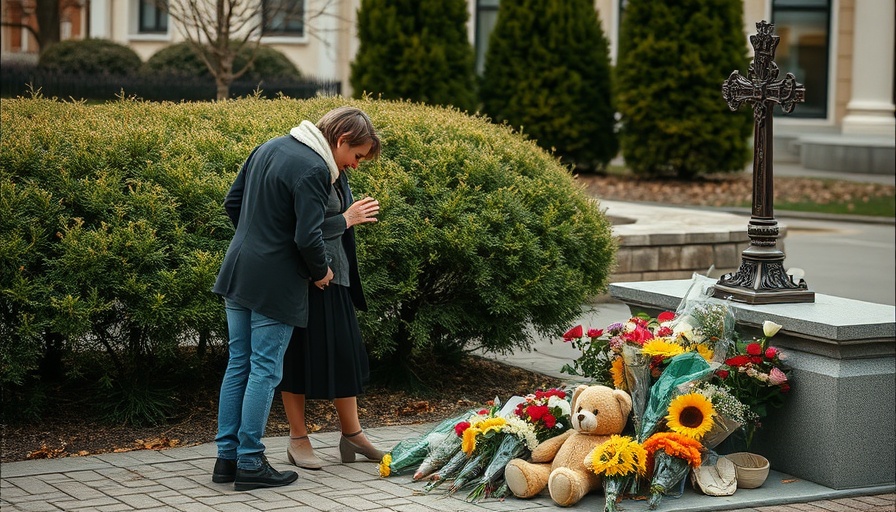
Understanding the Tragic CDC Shooting Incident
On August 11, 2025, the Centers for Disease Control and Prevention (CDC) headquarters in Atlanta witnessed an attack that left the community in shock. A Georgia man, Patrick Joseph White, fired over 180 shots, shattering about 150 windows and causing extensive damage to multiple buildings on the campus. Although no personnel at the CDC were injured, the incident resulted in the tragic death of Officer David Rose, a member of the local law enforcement response team.
The Aftermath for the CDC Community
The immediate aftermath of the shooting has led to significant changes within the CDC. Employees have been advised to work from home as the agency assesses the damage and security concerns. The extent of the destruction became painfully clear during a leadership meeting, where multiple buildings, including those housing top officials, were reported to have sustained major hits. While CDC staff are temporarily distanced, the emotional scars of the incident will likely influence the agency's work environment for some time to come.
Linking Violence to Mental Health: A Deepening Concern
Patrick White's motives appeared rooted in personal struggles, as he reportedly blamed the COVID-19 vaccine for his depression and suicidal tendencies. This complex interplay between mental health and public safety raises important questions regarding how society addresses mental health concerns. As public health advocates emphasize the necessity of mental wellness care, the challenge remains in how institutions can better support individuals facing mental health crises while ensuring the safety of the broader community.
Community Responses and Calls for Improved Security Measures
In light of the shooting, CDC employees have voiced their concerns about inadequate security. The calls for more armed security personnel, enhanced bulletproof glass, and alarm systems reflect a broader anxiety within workplaces across the nation. How to protect both staff and visitors in environments dedicated to public health remains a pressing challenge. The conversation is shifting towards increasing safety protocols and better preventative measures which could include mental health resources for both public health workers and the community.
Expert Opinions: A Call for Reform in Health and Safety
Health Secretary Robert F. Kennedy Jr. expressed solidarity with those affected, stating no one should face violence while working to promote health in the community. The harsh reality presented by this tragedy is that it has triggered a call for reform in regulating access to firearms and pushed for better resource allocation towards health programs centered around mental well-being, disease prevention, and workplace safety. These discussions are not new but have been heightened by the stark reality of this incident.
Long-term Implications for Public Health and Workforce Culture
A retired CDC official, Stephan Monroe, raised concerns about the long-term implications this shooting could have on the morale of existing and future employees within the public health sector. The prospect of entering a workforce now shadowed by violence could deter potential candidates from pursuing careers focused on advancing health initiatives. The need for nurturing a supportive atmoshpere is essential, but how do organizations balance the need for public safety with ensuring their workforce remains committed and inspired?
Grieving in the Community: Remembering Officer David Rose
In the wake of violence, the community is coming together not just to grieve the loss of Officer Rose but also to reflect on how such tragedies can galvanize collective action towards a healthier environment. With memorials cropping up in honor of the officer who protected community safety, it serves as a reminder of the human stakes involved in public health and safety sectors.
As the CDC prepares to deal with the aftermath, questions remain about how to enhance safety protocols in public health settings while addressing the mental wellness of both employees and the community. The conversation is set to continue along with calls for a measure of policy change addressing gun violence in America.
For those invested in the future of public health in Davenport, it's a sobering reminder that comprehensive approaches to health and safety are intertwined. Engaging in thoughtful discussions on mental health and public safety may illuminate paths towards creating more secure environments.
Given the current landscape, it is imperative for communities to come together and advocate for necessary reforms that prioritize both health and safety. It starts with dialogue, and it’s crucial for each citizen to stay informed and involved in making their voices heard.
 Add Row
Add Row  Add
Add 




Write A Comment